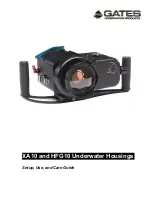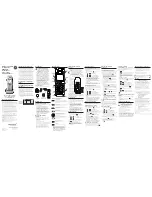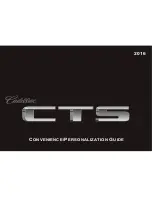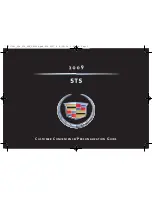
Roof-top air-conditioning system CC4E
Webasto Thermosysteme
Page 26 / 32
6.
MAINTENANCE
6.1.
Safety precautions
The safety instructions and regulations in chapter 1.4 must be observed.
6.2.
General
a)
Work on the refrigerant circuit may only be carried out by qualified personnel from duly authorized
specialist repairshops.
b)
The special equipment, tools and accessories listed in chapter 4.5 are required and must be used
for maintenance work on the refrigerant circuit.
c)
Like all parts of the vehicle, the air-conditioning system is subject to constant stresses. The
specified maintenance work must be carried out regularly in order to ensure troublefree operation
of the system and avoid damage to the components.
d)
Proper handling of the system and a complete record of all the required scheduled maintenance are
essential for acceptance of possible warranty claims concerning damaged components subject to
maintenance.
e)
To prevent not only the shaft seals of the refrigerant compressor drying out, but also moving parts
in the refrigerant circuit from seizing up due to resinification of the oil, the air-conditioning system
must be switched on for approx. 15 minutes at least once per month when it is not in regular use.
Requirement: Minimum outside temperature > 5 °C or heated hall.
NOTE
Care must always be taken to ensure that the oil level contained in the air-
conditioning system corresponds with that specified in the installation and
service instructions.
6.3.
Maintenance and care
a)
Regardless of the following schedule, all screw connections securing the roof-top air-conditioning
system must be checked within four weeks of using the system for the first time in order to ensure
that they are secure.
b)
Even if the air-conditioning system is not operated, individual components are subject to wear due
to normal ageing or stress due to vehicle operation. All checks listed in the maintenance and
servicing plan must therefore be performed regardless of the system operating hours.
c)
Even if hose connections do not leak, refrigerant may be lost regardless of operating hours. Due to
the structure of the material used for the refrigerant hoses, their diffusion rate can vary depending
on ambient temperature. However, a leak must be assumed to exist somewhere in the system if
relatively large quantities of refrigerant are lost at short intervals.
d)
Slight contamination of evaporator and condenser fins is removed with compressed air applied
against normal direction of air flow. Major contamination or greasy deposits must first be removed
with soapy water or a suitable cleaning solvent (not aggressive for copper or aluminum) before
cleaning with compressed air or a water jet.
e)
The receiver-driver must be replaced at least once per year and whenever work has been
performed on the refrigerant circuit.
IMPORTANT
Refrigerant must never be discharged into the atmosphere (refer to
Section 8 of the regulation dated 6 May 1991 banning the use of CFCs and
halones).









































